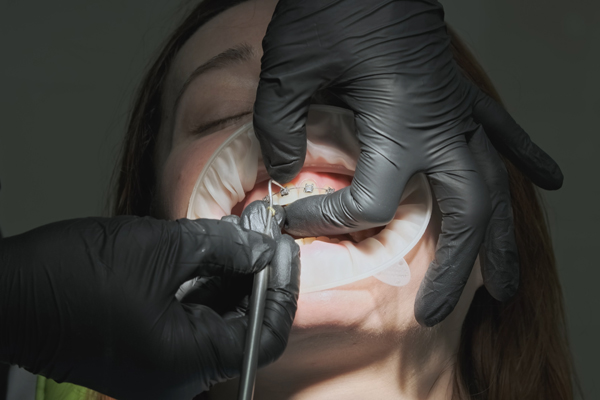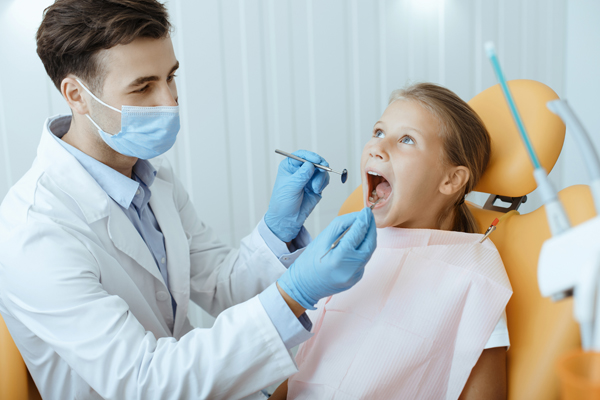Early Orthodontics (Phase I and Phase II)Belmont, MA
Although no specific age is set for children to begin early orthodontics treatment (phase I and phase II), the American Association of Orthodontics recommends parents take their children to the orthodontist around age seven. At seven-years-old, most kids already have a combination of baby teeth and adult teeth.
Benefits of Early Orthodontic Treatment
This makes it more convenient for the orthodontist to identify and fix tooth or jaw issues quickly without surgical procedure. At Belmont Smiles, our team can provide patients with the orthodontic care they need to grow up with healthy teeth in the proper alignment.
To help build a strong foundation for a child's teeth and oral health, invest in our orthodontic care for children at a young age.
Early orthodontic treatment can help to:
- Direct jaw growth in a positive way
- Correct harmful dental habits
- Improve the appearance of teeth and self-confidence
- Prepare the groundwork for eventual corrective orthodontic treatment
- Lower the chances of impacted permanent teeth
- Correct speech problems
- Create gum space for developing permanent teeth
This treatment plan is directed at correcting issues with tooth development and preventing jaw or tooth issue from worsening. While it is not compulsory for all children to undergo early orthodontics treatment (phase I and II), this plan can be highly beneficial.
Phase I Orthodontic Treatment
Also known as interceptive orthodontic treatment, this term describes procedures that commence at an early age in a patient's life. Phase I orthodontic treatment usually occurs when the child has primary teeth and some permanent teeth.
The treatment is advisable when the child needs intervention before starting regular orthodontic treatment, therefore creating two different treatment stages. Orthodontic devices, retainer-like devices, or partial braces might be used to avert the occurrence of an issue, fix an existing problem, or help adjust the child’s dental growth and development.
Phase I treatment can correct issues with tooth alignment, jaw, facial development, crowding and spacing, and gum or periodontal health. Although it is not always necessary, a second treatment phase often follows this treatment. Generally, the second phase of treatment is shorter and based on the results of the early intervention of phase I treatment.
When does Phase I Begin?
Phase I treatment usually starts between the ages of six and 10, and that is why a consultation with the orthodontist should happen no later than age seven or eight. Early consultation will help guarantee the proper growth and tooth development of the child.
Indications of Phase I Treatment
The orthodontist may suggest phase I treatment for different reasons, including:
- Crossbites
- Overbites
- Excessively overlapping or deep bites
- Asymmetrical jaw growth
- Protruding teeth
- Open bites
- Teeth crowding or spacing
- Clefts
In some cases, early treatment can simplify severe issues that might need future jaw surgery into a minor problem that can be corrected with orthodontics later. Thus, this treatment is sometimes necessary to prevent a more serious dental or orthodontic issue from happening.
Phase II Treatment
Phase II treatment is usually the more common orthodontic treatment when compared to phase I. This typically entails placing braces on the upper and lower teeth, as soon as all the adult or permanent teeth have grown in. Phase I does not correct tooth and bites issues, which means the second phase of treatment is necessary to complete the alignment of the teeth and bite.
Once Phase I treatment is successful, the second phase of orthodontic treatment may not be as rigorous as it would be if the child never received Phase I orthodontic treatment. However, many children can receive Phase II orthodontic treatment without getting Phase I treatment. Phase II orthodontic treatment typically lasts for about 12 to 30 months, depending on the extent of the issue and whether jaw surgery is necessary.
Continuing Treatment
There is a chance that orthodontics alone will not be enough to correct the child’s bite problems. The explanation is simply that the jaw has not fully developed. For instance, the upper and lower jaw may be individually oversized, too small, or have formed asymmetrically.
These altered growth forms are common in patients with cleft lip and palate, Pierre-Robin syndrome, ectodermal dysplasia, craniosynostosis, hemifacial microsomia, and Treacher-Collins syndrome. Issues with jaw formation can also happen without any syndrome or medical condition.
In these situations, the orthodontist may need to combine both orthodontic treatment and orthognathic (jaw) surgery for treatment. Therefore, phase II might be restricted to straightening the teeth only, without correcting the bite.
Call Us Today
It is possible to correct some orthodontic issues if treatment happens early in life. Early orthodontics treatment (phase I and II) is primarily about averting the occurrence of more severe problems later in life. These treatments allow the orthodontist to control the space available for permanent teeth and correct bite problems by manipulating jaw structure during development.
Call us to learn more about early orthodontics and our treatment options.





